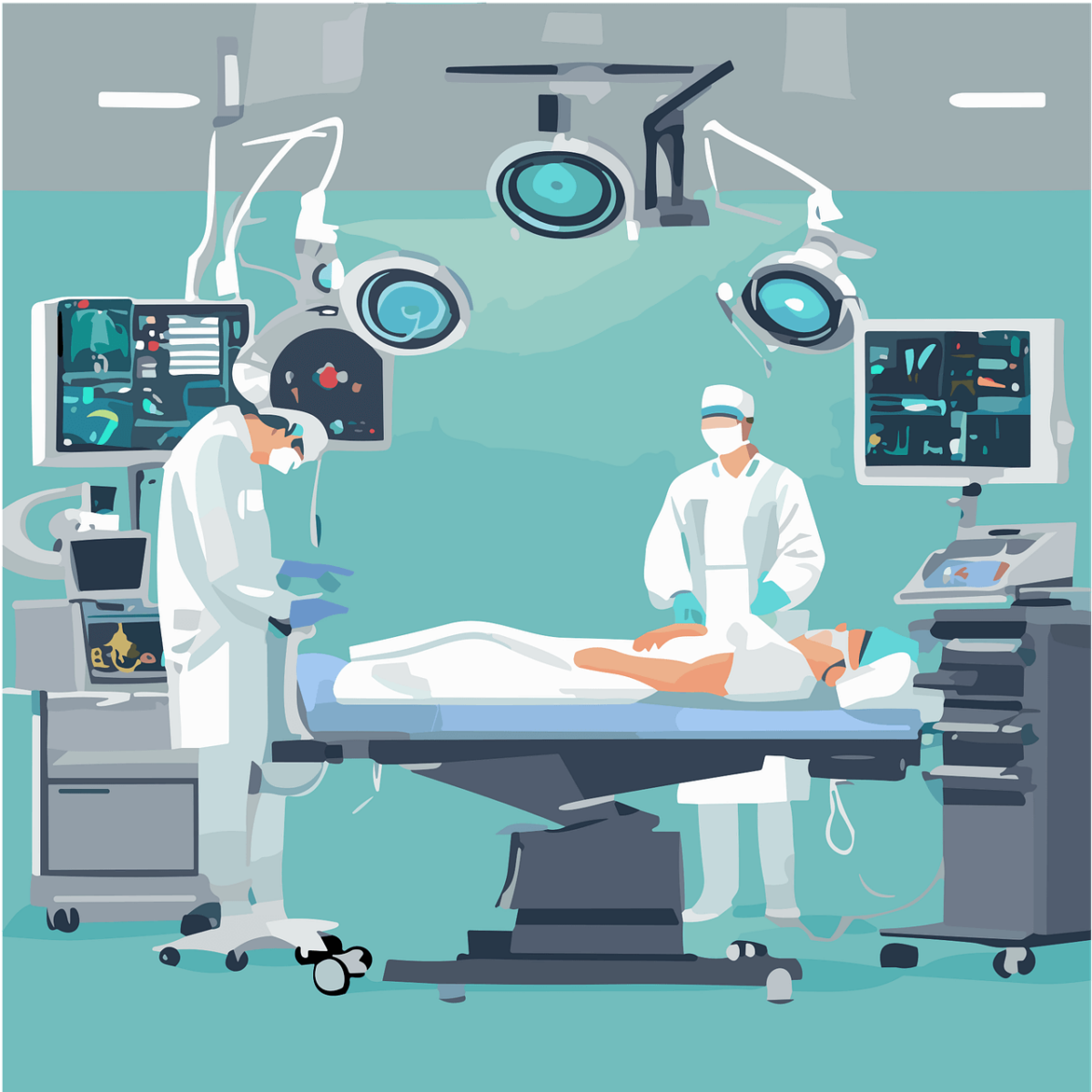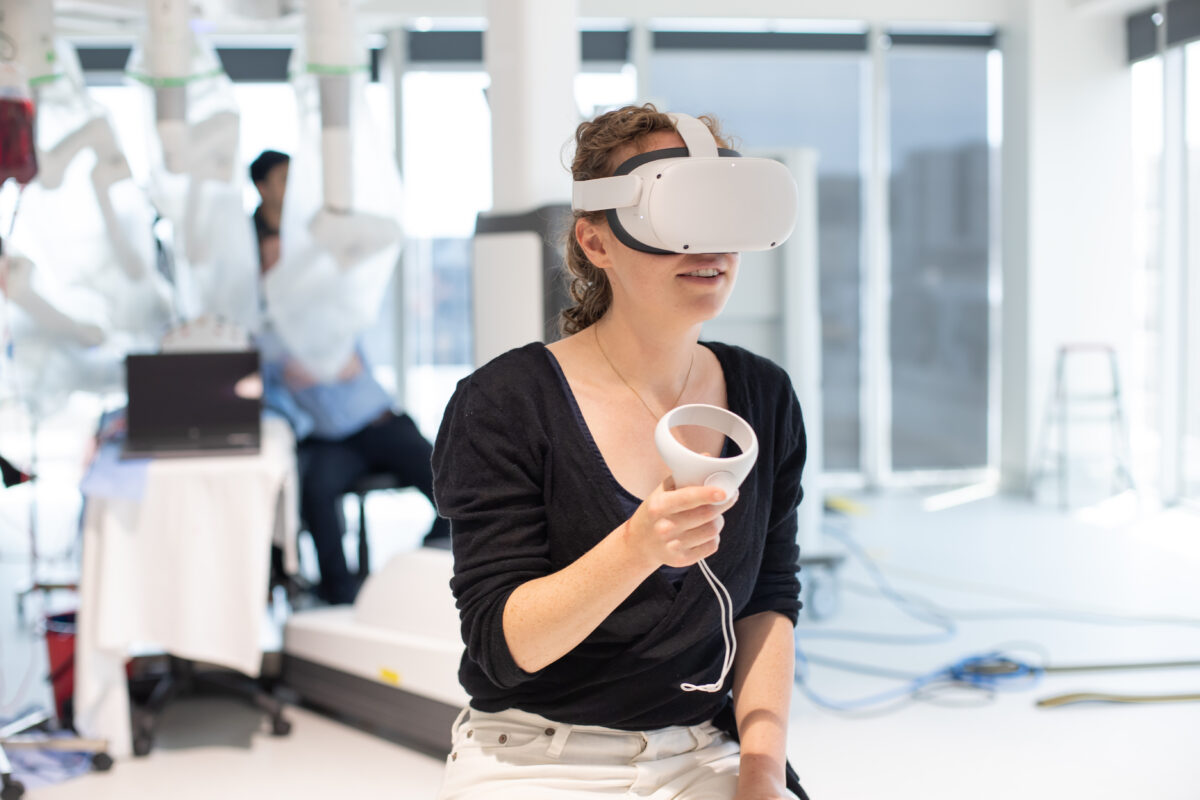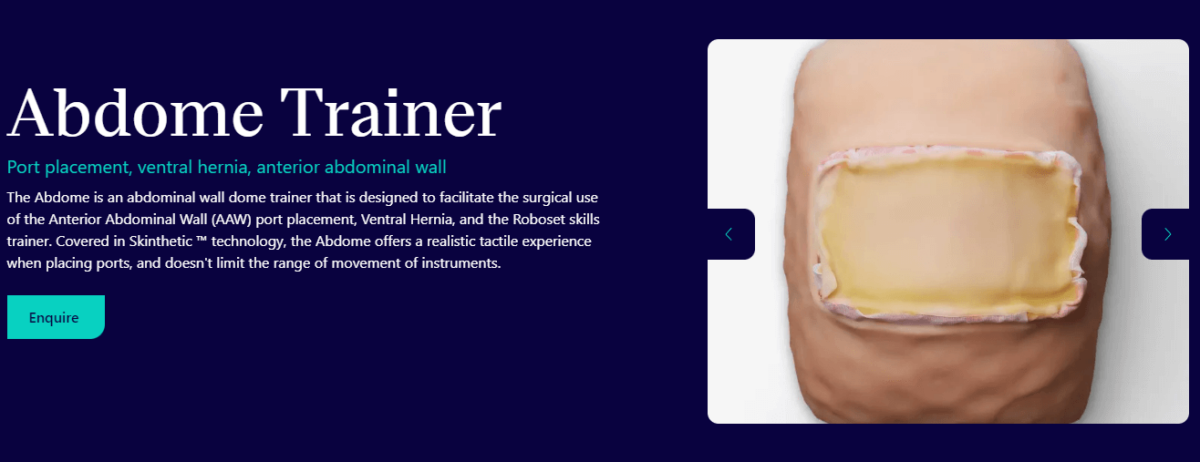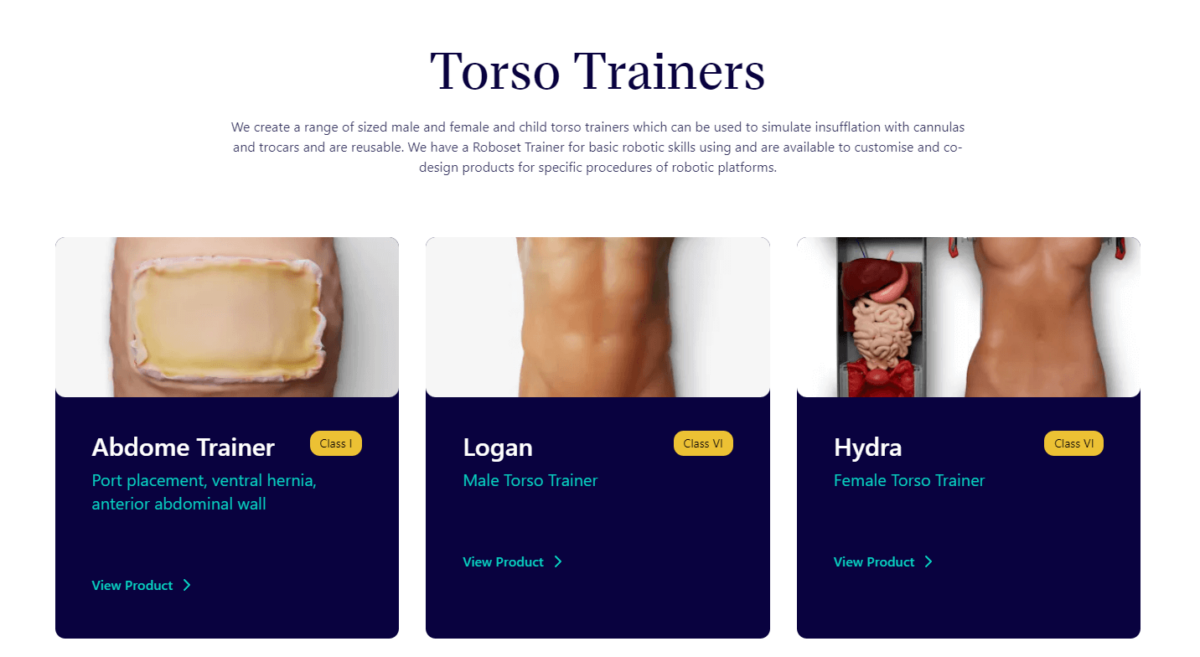The term “robotic surgery” often conjures images of a sci-fi future where robots have taken over the operating room. In reality, robotic surgery technology is a tool that enhances the abilities of surgeons, leading to less invasive procedures, fewer complications, and quicker recovery times for patients.
It’s a sophisticated form of minimally invasive surgery that allows highly trained surgeons to operate with enhanced precision and control through small incisions, using robotic arms that respond to the surgeon’s movements.
The integration of robotic assistance in surgical procedures is a significant stride in medical technology, offering a blend of the surgeon’s expertise and the robot’s consistency.

The evolution of robotic surgery
Robotic surgery technology has traveled an extraordinary journey of growth and transformation. In its nascent stages, computer-assisted surgical systems provided basic enhancements to traditional surgical procedures.
As technology progressed, these evolved into complex robotic platforms that extended the capabilities of surgeons, such as the widely recognized da Vinci system.
The timeline of robotic surgery’s evolution can be visualized through key milestones:
- The birth of computer-assisted surgery: In the late 1980s, robotic technology in surgery made its debut, albeit in a rudimentary form compared to today’s standards, enhancing surgeons’ precision and control.
- Pioneering robotic systems: Throughout the 1990s, robots like the ROBODOC helped perform orthopedic surgeries, laying the foundation for future innovation.
- The introduction of telemanipulators: These devices allowed surgeons to operate at a distance from the patient, a concept that would be refined and integrated into later robotic systems.
- The da Vinci breakthrough: In the early 2000s, the FDA-approved da Vinci™ system took robotic surgery to new heights with its 3D vision, precision, and dexterity, soon becoming the go-to for minimally invasive procedures.
- Advancement in sensory feedback: The addition of haptic feedback provided surgeons with a sense of touch, enhancing their ability to perform delicate tasks with increased sensitivity.
- Expansion across specialities: Robotic surgery started broadening its reach, addressing procedures in urology, gynecology, cardiovascular, and general surgery, to name a few.
- Current Innovations: Today, the integration of artificial intelligence, machine learning, and 3D printing is creating new possibilities for pre-operative planning, intra-operative navigation, and personalized robotic interventions.
If you want to read more about the history and timeline of robotic surgery you can do it here!
Defining robotic surgery technology
At its core, robotic surgery technology represents a synergy between modern computing, cutting-edge engineering, and the refined skills of a surgeon.
This technology comprises robotic systems that allow for precise manipulation of surgical instruments from a console operated by the surgeon. It’s equipped with features that set it apart, such as magnified 3D visualization of the surgical site and instruments that can mimic the movements of the human hand with even greater dexterity.
The defining elements of robotic surgery technology include:
- Surgeon’s console: The work station where the surgeon views a high-definition 3D image of the surgical site and manipulates the instruments.
- Robotic arms: Precision tools capable of translating the surgeon’s hand movements into smaller, more precise motions.
- Advanced imaging: Offers surgeons an in-depth view of the operative field, exceeding the capabilities of the naked eye.
- Software interface: Intelligent systems that filter and translate the surgeon’s hand motions into accurate movements of the robotic instruments.
These intricate systems enable a broad spectrum of surgical procedures to be performed with increased precision, flexibility, and control compared to conventional techniques.
What sets robotic surgery apart?
When considering the advancements in surgical methodologies, robotic surgery stands out as a transformative achievement. This innovative approach to surgery improves upon traditional practices in several distinct ways:
- Precision: The high level of accuracy afforded by robotic arms allows surgeons to operate on tiny areas, reducing the risk of damaging surrounding tissues.
- Minimized incisions: Robotic instruments can perform complex tasks through small incisions, leading to less scarring and a lower risk of infection.
- Enhanced dexterity: The robotic system’s instruments have a greater range of motion than a human hand, which increases the surgeon’s ability to stitch, cut, and suture in constrained spaces.
- Reduced blood loss: Better precision and control result in less blood loss during surgery, which can decrease the need for transfusions and promote quicker recovery.
- Shorter recovery time: Patients often benefit from quicker healing times, thanks to less invasive techniques, leading to a quicker return to daily activities.
These qualities demonstrate why robotic surgery is more than just an evolution in surgical practice, it’s a revolution in patient care.
How robotic surgery technology enhances healthcare
By integrating robotics into surgical practices, healthcare systems experience a paradigm shift, unlocking benefits that resonate across the variety of patient care and operational efficiency.
This technological marvel offers a plethora of improvements, including:
First and foremost, robotic surgery has made procedures less invasive, leading to significant reductions in patient trauma and postoperative discomfort. These advancements in turn help minimize hospital stays, not only improving the patient experience but also yielding cost benefits for healthcare providers.
The precision of robotic systems contributes to enhanced clinical outcomes, including fewer complications and reduced infection rates. Surgeons are empowered to perform complex surgeries with newfound accuracy, which often translates into better preservation of healthy tissue and optimization of surgical results.
Training and skill development for surgeons also see substantial improvements through simulator-based learning and real-time performance feedback offered by robotic platforms. Moreover, the integration of IMRA’s Next-Gen surgical training models into the education pathway helps practitioners improve their skills with the latest equipment.
Lastly, robotic surgery technology is a springboard for further innovation in healthcare. The data aggregated from robotic-assisted surgeries can be analyzed to refine techniques, tailor patient care, and guide future improvements in the ever-evolving landscape of medicine.
- Operational streamlining: Hospitals can leverage the technology to perform more surgeries with improved outcomes, which can increase the efficacy and capacity of surgical departments.
- Global reach: With telepresence features, skilled surgeons can potentially offer their expertise to patients worldwide, democratizing access to quality surgical care.
- Integration with emerging technologies: The marriage of robotics with artificial intelligence (AI) and machine learning promises to further enhance surgical precision and predict patient-specific outcomes.
IMRA Surgical’s pioneering role in robotic surgery training
Robotic surgery requires a specialized skill set that can only be honed through training and practice. Recognizing the significance of education in this field, IMRA Surgical has emerged, offering innovative training programs designed to equip the next generation of surgeons with the prowess needed to excel in robotic surgery.
IMRA’s commitment to surgical education is exemplified by its adoption of modern tools and techniques, from virtual reality to advanced synthetic organ models. Their approach focuses on proficiency-based learning, which makes the educational experience to the progression of each individual learner, ensuring mastery of the robotic system’s intricacies and the surgical procedures involved.
The impact of IMRA’s training programs extends beyond technical skills. It also instills in surgeons the critical thinking necessary for real-world application, patient safety, and the ability to adapt to rapidly advancing technologies.
In collaboration with esteemed bodies such as the Royal Australasian College of Surgeons and the Royal College of Surgeons Ireland, IMRA’s contributions to surgical education continue to shape the future of surgery and patient care.

Our approach to robotic surgical education
IMRA Surgical adopts an educational strategy that is multifaceted, embracing the full scope of learning experiences from theoretical knowledge to hands-on practice. Their educational philosophy is underpinned by a commitment to producing surgeons who are not only technically proficient but also applying their skills to patient care.
Key aspects of IMRA’s approach include:
- Structured learning: Following a systematic curriculum that progresses from simple to complex procedures ensures a foundation upon which advanced skills are built.
- Blend of learning modalities: Incorporating a mix of instructional methods, from didactic lectures and interactive media to hands-on simulation-based training and Online Surgical Training, caters to diverse learning styles and reinforces knowledge retention.
- Realistic simulation: Leveraging high-fidelity simulations bridges the gap between classroom theory and operating room reality, allowing trainees to practice and perfect their techniques in a safe environment.
With an acknowledgment that proficiency goes beyond mere repetition, IMRA Surgical’s educational model emphasizes the importance of understanding the ‘why’ as much as the ‘how’. This breeds confidence and adaptability in future surgeons, ensuring they are competent not just in procedure, but in innovation, safety, and patient-centered decision-making.
Robotic surgery applications across specialities
From the precision-required dissections in urology to the delicate touch needed in gynecology, advanced robotic technologies have become invaluable assets in the surgeon’s toolkit, fostering a new era of specialized minimally invasive surgery.
Areas where robotic surgery is making significant inroads include:
- Urology: Robotic assistance is pivotal in procedures like prostatectomies and partial nephrectomies, where the operating field is exceedingly intricate.
- Gynecology: For delicate procedures such as hysterectomies and myomectomies, robotics offer a level of precision that enhances the preservation of surrounding tissues and organs.
- Cardiac surgery: Even in heart surgery, robotics are facilitating less invasive approaches to valve repair and coronary artery bypass grafting.
The expanded application of robotic surgery across these specialties has also triggered advancements in surgical instruments and techniques. A multidisciplinary approach to surgical care is creating collaborative teams adept at leveraging these technologies to provide the highest standards of patient care.
The patients’ perspective experiencing robotic surgery
Robotic surgery is a significant medical advancement that can be both intriguing and intimidating for patients. Understanding the patient journey through robotic surgery helps with the process and emphasize its benefits.
Before surgery, patients receive detailed explanations to ensure they are comfortable and informed. Preoperative checks may include a physical exam and lab tests to confirm their readiness for surgery.
During surgery, patients are under anesthesia, and the medical team monitors them closely. The surgery utilizes a surgeon-operated console and robotic arms, enhancing precision and safety.
After surgery, patients typically recover faster and with less pain, allowing a quicker return to normal activities. Follow-up care is crucial, with healthcare teams overseeing the recovery and addressing any concerns.
It’s important for patients to have access to resources and support throughout this process to help them know what to expect.
What can patients expect before, during, and after surgery?
For many patients, the thought of undergoing surgery, especially one that involves robotic technology, can evoke a range of emotions from curiosity to concern. The key to a comfortable surgical experience lies in knowing what to expect at each step of the process. Here, we unveil the patient’s journey through robotic surgery in a clear and succinct manner.
- Before Surgery: Preparation is paramount. Patients engaging with robotic surgery will undergo comprehensive consultations. Healthcare professionals will explain the procedure, discuss the risks and benefits, and map out the recovery plan. This stage often includes preoperative tests and discussions about anesthesia to ensure patient safety and readiness for the upcoming surgery.
- During Surgery: Although the patient is under anesthesia and will not be conscious during the procedure, it is reassuring to know that the surgical team, guided by the skilled hands of the surgeon, is in full control. Robotic surgery enables precision and delicacy, potentially leading to fewer complications.
- After Surgery: Postoperative recovery is where the merits of robotic surgery often shine. Patients typically benefit from reduced pain and faster healing times due to smaller incisions and minimal tissue disturbance. Healthcare providers will closely monitor patients’ recovery, offer pain management solutions, and provide postoperative guidelines to support a smooth return to daily activities.
IMRA’s Next-Gen surgical training models
Next-generation training models, such as those developed by IMRA Surgical, are transforming surgical education, especially in robotic surgery.
These models feature hydrogel tissue and realistic anatomical structures, providing a high-fidelity experience without using live tissue. This not only addresses ethical concerns but also offers an effective, cruelty-free training alternative.
Surgeons using these models can practice complex procedures, enhancing their skills in a controlled setting which leads to improved patient outcomes. IMRA’s proficiency-based models also support gradual learning, from basic to advanced surgical tasks, with realistic feedback to mimic actual surgical environments.
Such advancements in training tools are crucial for elevating surgical standards and preparing surgeons for modern, high-tech medical settings.
Advanced hydrogel tissue models
Surgeons in training often face the challenge of transitioning from theoretical knowledge to proficient execution of surgical procedures.
Bridging this gap, advanced hydrogel tissue models have emerged as components in the evolution of surgical education, particularly within robotic surgery.
An example of this is the Abdome Trainer, a product designed to mimic the consistency and responsiveness of human tissue, providing a realistic platform for surgeons to practice their craft.

The benefits of utilizing hydrogel tissue models in surgical training include:
- Realistic feel: Replicating the mechanical properties of human tissue, hydrogel models allow for an authentic tactile experience during surgical practice.
- High fidelity: Detailed anatomical accuracy ensures that trainees can visualize and engage with structures similar to those encountered in a live setting.
- Safety: By practicing on non-living models, surgeons-in-training can hone their skills without any risk to patient safety.
Proficiency-based learning with Pindari products
The concept revolves around the progression of skill development until predefined levels of competence are achieved, rather than traditional methods that focus on time-based training. This promotes a focused and efficient learning curve for surgeons who must master the nuances of robotic systems and procedures.
IMRA Surgical’s commitment to this educational approach is reflected in its adoption of Pindari Products. These innovative training tools are designed to facilitate an interactive and hands-on learning experience. By simulating realistic scenarios, they allow surgeons to practice repeatedly and measure their performance against high standards of accuracy and precision.
Features of integrating Pindari Products in surgical training:
- Targeted skill development: With tasks segmented by complexity, trainees can focus on mastering each skill level before advancing to more challenging procedures.
- Performance metrics: Objective performance data provides concrete evidence of proficiency, enabling both surgeons and trainers to identify areas for improvement and verify skill acquisition.
- Customized training pathways: Surgeons can tailor their training experience to their individual learning pace and objectives, fostering a more personalized and effective educational journey.

Pushing boundaries in robotic surgery
Every new technological breakthrough pushes the previous boundaries of precision, control, and accessibility in surgical procedures. As these innovations take shape, the goal remains consistent: to enhance the quality of patient care while streamlining surgical processes.
Trends in robotic surgery focus on several areas:
- Miniaturization: Developing smaller, more agile robotic instruments allows for even less invasive surgeries, reducing recovery time further and leaving minimal scarring.
- Improved sensory feedback: Advancements in haptic technology grant surgeons a more nuanced sense of touch, crucial for procedures that demand extreme delicacy.
- Artificial intelligence integration: Implementing AI into robotic systems can enable smarter decision-making support and possibly predict patient-specific outcomes.
Robotic surgery certification and accreditation with IMRA
Robotic surgery is transforming modern medical procedures, and the role of certification and accreditation is becoming increasingly critical. Proper credentials ensure that surgeons operating robotic systems possess the necessary skills and knowledge, enhancing the quality of patient care and ensuring adherence to industry standards.
IMRA Surgical has developed a certification pathway that involves comprehensive training and thorough skill assessments. This process not only confirms a surgeon’s competence in handling advanced robotic technologies but also reassures patients and healthcare providers of the surgeon’s ability to deliver safe and effective care.
Through strategic partnerships with esteemed organizations, IMRA Surgical maintains the highest standards in its certification programs. These credentials do more than just verify a surgeon’s expertise, they keep surgeons at the forefront of technological and procedural advancements, ensuring they are well-equipped to handle robotic surgery.
The commitment to continuous education to strict standards through certification ultimately leads to improved surgical practices and better patient outcomes. For the medical community and patients alike, the assurance provided by these accreditations is invaluable, establishing a foundation of trust and excellence in the rapidly evolving field of robotic surgery.



